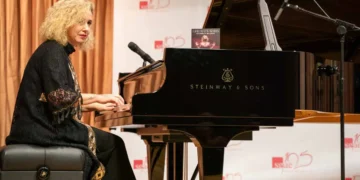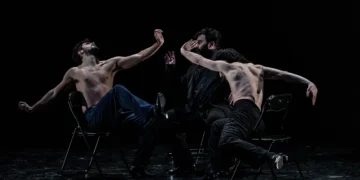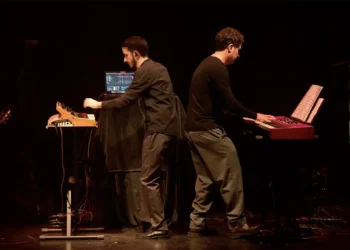Text with illustrative CD and 38 illustrations published by Amadeus Press
|
Writing in a lucid and fluent yet colourful English that makes it easy to understand for the general public, the author unfolds, one by one, the difficulties and complexities that make up what we now call flamenco. And this he does in a text completely devoid of clichés, carefully analyzing it from basics to pure essence, including precise details, keen interpretation, and multiple references, and, like a true connoisseur, taking care to mention the dangers and difficulties that, in this as in any art, might set its evolution and development against its former purity. A text completely devoid of clichés…with precise This, of course, he could only have done after living flamenco from the inside, and no doubt guided, as he acknowledges, by such as the late Pepe Guardia Rodríguez in Granada and Paco el Melchora in Jerez. And he comes out of the enterprize with flying colours.
In the seven chapters and five appendices he gives a detailed account of all aspects of the song, dance and guitar, from those times when the song was the private expression of the outcasts, until today when our art is spreading throughout the world as never before. Special mention should be made of the accompanying CD, 21 recordings, mostly unknown, most of them made by the author, in which a whole list of excellent singers give examples of the various flamenco rhythms and song-forms. Fascinated by this splendid book, we would earnestly encourage the author to bring out a Spanish edition soon. We are confident that, like us, every reader, whether an enthusiast or one simply interested in flamenco, will be amply satisfied, and will greet its publication as an event in the flamenco world. Federico Tovar
Author Robin Totton at his home in Jerez
«Song of the Outcasts-an Introduction to Flamenco» Chapter 1 Why, what, when, who? Also, general characteristics: strong expression of emotions, complicated rhythms, and the compás. Chapter 2 The Song The flamenco mode or scale; use of the voice, of quartertones, melisma , and the difference (from other music) in the relative importance of tune, harmony, rhythm and words. Chapter 3 The Dance General characteristics: force v. grace, downwards movement, individual, introvert, abstract, and ecstatic trends. Then, the shape of the dance: use of the arms, the feet; the «twelve-count»; difference between man's and woman's dance; between Gypsy and non-Gypsy dance. Chapter 4 The Guitar The instrument; elements of technique; a bit more on the e-mode and harmony; art versus technique. Chapter 5 The song-forms For reference and for reading. Description of each of the son-forms or palos , with reference to the accompanying CD. It includes for each palo its measure, rhythm, song, dance, guitar and samples of the words (in Spanish and English). I also use each palo to explain an aspect of flamenco. Chapter 6 » Where is it going? « On modern trends: fusion, modern dance and the continuing tradition. Chapter 7 « Who are the Gypsies of Andalucía? » Calós v. the Romanies of elsewhere; probable origins; Customs and characteristics; origin of the word flamenco. Appendices: Glossary. Carlos Saura's film video «Flamenco» described. Bibliography and discography. Addresses for further information. Index |






 Author Robin Totton lives in England and Spain where he has been exploring flamenco for a decade. He has published a guide to Andalucia and is correspondent for the flamenco magazine El Olivo . He has studied at Universities in England, France and Spain and taught for Maryland and the Sorbonne.
Author Robin Totton lives in England and Spain where he has been exploring flamenco for a decade. He has published a guide to Andalucia and is correspondent for the flamenco magazine El Olivo . He has studied at Universities in England, France and Spain and taught for Maryland and the Sorbonne. 


















